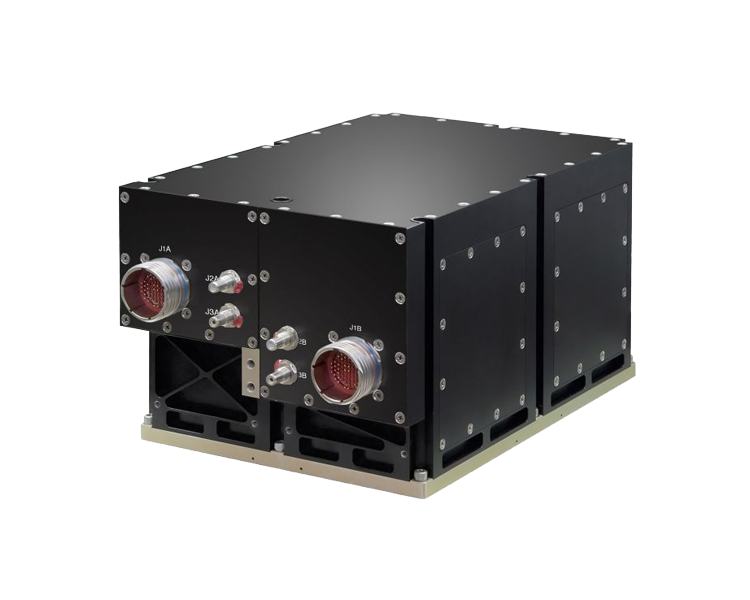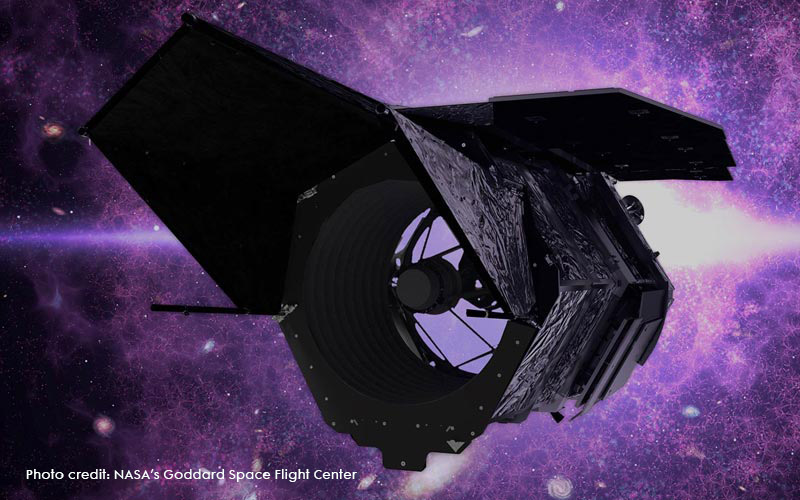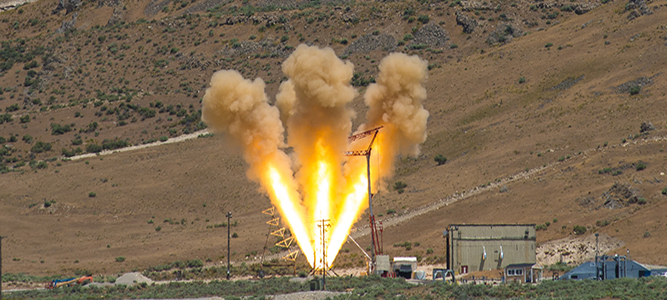Navigating the Nancy Grace Roman Space Telescope

By Kelly McSweeney
Within the next decade, NASA's Nancy Grace Roman Space Telescope (Roman Space Telescope) will be one million miles away from Earth, orbiting the L2 point (the second Lagrange Point), about four times further than the Moon, but in the direction away from the Sun. Named for NASA's first chief of astronomy who assisted with the Hubble Space Telescope launch, the Roman Space Telescope will help answer essential astrophysics questions about dark energy, dark matter, exoplanets and infrared astrophysics.
Set to launch in the mid-2020s, the Roman Space Telescope will measure light from other galaxies and search for mysterious celestial objects such as rogue planets that wander through the universe without a star. To do these things, the images it takes must be stunningly sharp – the equivalent of being able to see which way a firefly is facing in a photo taken from a distance of 10 miles. But if your shaky hand can make a once-in-a-lifetime photo blurry, just imagine the importance of a having a reliably steady telescope in space.
"The things that we know now will be nothing compared to what people will understand 200 years from now. But it's just amazing what we can do now, what we can learn about our Earth and the universe."
— Larry Hershman

Pairing Wine Glass Physics with Advanced Algorithms
From the outside, the Scalable Space Inertial Reference Unit (SSIRU) looks deceptively simple — it appears to be a foot-long black box with a few basic controls. But inside the box, advanced electronics and sensors tell a bigger story. A star player is the Hemispherical Resonator Gyro (HRG), a sensor that has a proven track record of reliability and longevity, two features that will be critical for the Roman Space Telescope's success. The HRG-based SSIRU has spent more than 50 million operating hours in orbit with 100% mission success. The SSIRU has been used on a wide variety of military, commercial and science missions that require high-precision pointing.
Inside the SSIRU, the gyros are a key element in stabilizing the telescope’s platform by detecting angular movement, which ensures the telescope can properly point to an exact location in the sky and detect light that will reveal previously unknown facts about the universe.
"The HRG is based on a theory of a wine glass," said Larry Hershman, program manager for SSIRU. He explained that if you rub your finger around a wine glass to make a sound, when you rotate the wine glass, you'll hear a difference in the pitch.
While the physics behind the HRG has been known for decades, it was the Northrop Grumman team who developed algorithms and mechanical manufacturing methods to perfect the process. The HRG can measure a very slight movement in order to pinpoint the movement of the SSIRU and therefore stabilize and point the telescope in space.
"We took a relatively mature technology, and we were able to provide precise output through the use of enhanced data processing," said Kevin Brabec, director of space and strategic programs within Northrop Grumman's Navigation and Positioning Systems business unit.

The team behind Northrop Grumman's Scalable Space Inertial Reference Unit (SSIRU™) navigation system is working to make sure the Roman Space Telescope can stabilize and point in the right direction, even when it's extremely far from home for many years.

Keeping the Roman Space Telescope on Course for the Long (Distance) Haul
The Roman Space Telescope introduces an exciting next era in space exploration by enabling the measurement of light from a billion galaxies and will survey the inner Milky Way to find hundreds of exoplanets in the habitable zones of their stars. The Northrop Grumman team must ensure that the SSIRU will continue to perform even when the Roman Space Telescope is located millions of miles away. Each of the thousands of components has been carefully selected and tested to withstand the harsh radiation environment of space. The black box is also coated in protective material to further shield its sensitive components from radiation.
“The worry of all manufacturers of inertial reference units in space is that if the inertial reference units are inoperable, you will basically have a spinning satellite with no control,” Hershman said. “An out of control satellite is not very useful. That's why reliability is such a key point."
The Roman Space Telescope is in good hands because Northrop Grumman’s heritage technology was used on the 20-year Cassini mission. Cassini studied Saturn and its moons in detail, and the spacecraft was able to extend its mission beyond the expected performance period. Eventually, the spacecraft was guided through Saturn's rings using the HRG to be intentionally destroyed in the atmosphere.
The SSIRU is currently on other scientific missions, such as NASA's Parker Solar Probe and the James Webb Space Telescope. It also supports classified military missions, plus multiple commercial missions, such as earth imaging satellites. “The things that we know now will be nothing compared to what people will understand 200 years from now,” said Hershman. “But it's just amazing what we can do now, what we can learn about our Earth and the universe.”
More innovation stories
Read all stories about advanced technology and innovation >>


